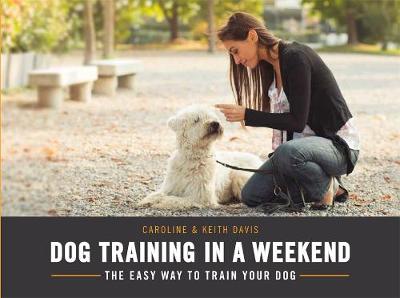So you’re either doing research on having a dog, or you already have one and have heard about Hip Dysplasia – but what is it and what does it mean for your four-legged pal??
I will try and explain in a simple way what hip dysplasia is, what causes it, how we check for it, what a hip score means, what can be done to help prevent the problem and how you can help ease the pain of hip dysplasia.
You can read the whole post or use the links below to skip to the bit you need:
- What is hip dysplasia?
- What causes it?
- What does a hip score mean?
- How do I know if they have it?
- How to help prevent it
- How to help ease the pain of hip dysplasia
What is Hip Dysplasia anyway?
Hip dysplasia just means there is a problem with your dog’s hips, or there could be in the future. Sadly it is a common problem with dogs.
Its a problem with the hip joints, usually a change in the shape but could also mean potential arthritis (technically its osteoarthritis); it could mean the hip socket (joint), hip and ball are the wrong shape so they are grinding on each other or slipping slightly, making it difficult for your dog to move around and also very painful!!
Sometimes it is shortened to HD (Hip Dysplasia).
If your pup or dog has hip dysplasia, it will have started at young age and only get worse as they get older and get more active! The joints will suffer from more wear and tear than they normally would, the problems can be in one or both hips.
The damage can range from an oddly shaped, painful hip with osteoarthritis to severe damage and agonising osteoarthritis!
Obviously, this causes lots of serious problems for your poor dog with movement, behaviour, other health and their mental welfare!
Imagine having agonising pain in your hips constantly – wouldn’t you be depressed and grumpy too? I know I would!!
What causes hip dysplasia?
The BVA and the Kennel Club have been researching causes, prevention and cures for a very long time. Hip dysplasia is basically arthritis for dogs in the hips.
It can be caused by two factors according to the BVA – environmental and hereditary.
Hereditary causes are genetic ones and can’t really be changed. They are problems passed down through the generations from parents to pup. If the parents or ancestors have had hip problems, the chances are the pup will too.
Environmental causes are everything else. From exercise to weight, to where they sleep at night I’ve been told!
What does a hip score mean?
A hip score is how the dogs hips are ‘rated’ if you like. Each dog that is tested has x-rays taken and then a panel of experts review and score them. It isn’t just down to one persons opinion.
Hip scores are given to each hip and will total between 0 to 106. Meaning the highest, maximum score for each hip is 53.
If you are buying a puppy or dog, you want to ask the breeder/owner if the pups parents have been hip scored and ask to see the results. If it is an older dog (over 1 year old) it may have been hip scored itself – ask to see the results. You are within your rights to see this information before you hand over any money or love!!
The Kennel Club, BVA and responsible breeders will tell you to only breed from dogs below the median. The median is taken from the BVA’s test results from all dogs in the last 5 years, then averaged. The BVA publish these results for all to see and use.
You can download the free pdf of the 5 year BVA hip scores results in the downloads section of our website.
How do you know if your dog has hip dysplasia?
If you are a dog owner…
All puppies LOVE to run around, play fight, chase the kids around the living room and pester the cat all day… how do you stop a pup from exercising too much? It’s a bit tricky, same as it’s tricky to get a two year old to sit still!
It is so important though (especially with big breeds) to try and limit playtime and exercise. This will help their hips have a chance to develop properly, as well as the rest of their bones and muscles.
Pups need a lot of rest and they should be encouraged to have it too.
If you see your pup struggling to move around and especially if they yelp as they do – get them to the vet asap.
Here are a few things you can keep an eye out for that may mean the start of a hip problem:
- struggling to get up or down off the floor
- yelping/groaning as they run, jump, walk, get up or down
- wobbly walk but just in the back legs
- hips make a noise when they move around
- hips/back legs feel ‘loose’ when you hold them
- any strange looking shapes in the hip area
- stiffness when moving around
- they have trouble using stairs
- they don’t want to exercise
If you are a pet owner, the best thing to do is get to the vets as soon as you have any worries – even if it means spending some time and money ‘for nothing’ in the end.
The vets will check over your pup and see if they can feel anything that feels not quite right, they will then recommend x-rays or observation and limited exercise for a while before going back for another check up.
If you are a breeder…
How do we find out if our dogs have hip dysplasia?? Well, as a breeder we hip score our dogs before we breed them firstly.
We use the BVA/KC Hip Dysplasia Scheme – which was created by the Kennel Club and the British Veterinary Association back in 1965 to try and minimise the problem as much as possible.
The scheme is run by experts in their field, taking x-rays to check for abnormalities and then they review and score them.
The scores tell us the chances of our dogs developing or already having hip dysplasia.
We then use the BVA/KC hip dysplasia median score and will only use a dog for breeding if she is below the median.
The median score is taken from all of the dogs scored in the last 5 years, then they use the average score from all of those dogs. The BVA publish these scores and that’s what breeders use to decide whether a dog can be bred from or not.
Remember, you can download the free pdf of the BVA hip scores in the downloads section of our website.
If one of our dogs is too high a risk we won’t breed from her. Simple.
What can you do to help prevent hip dysplasia?
If you are a dog owner…
Unfortunately, hip dysplasia can happen to any dog, whether they have low hip scores or good breeding or you take every precaution you can.
It’s just like something us humans might develop; some people may live their life ‘right’ and still get ill, others mistreat their body and live a long life.
Don’t lose all hope though, there are some things you can do to help your pup or dog to prevent possible hip problems. Especially if you have them from a young age.
- Limit exercise. This means playing, jumping, chasing the kids or cat, walking to the shop or school etc – it means everything that means movement. This can be very hard at times and like I said earlier, pups love to run around!
Tip: You could try training them to roll over for treats as a playtime game, still fun but less movement needed.
- No walkies! Young pups get enough exercise from just playing in the house or garden. They don’t need to walk out anywhere yet. Lead training can be done indoors or in the garden for a few minutes every day as part of playtime. Think of them as a newborn baby, would you expect them to run around a field for an hour like you would a 15 year old? Nope!
- Encourage rest. Do they have a crate or pen that they use? Encourage them to have lots of rest, make sleepy time in the crate a good thing. Now I don’t mean lock them in somewhere for hours on end to stop them moving around!!
Tip: They need a lot of rest anyway, let them have it. Tell the kids that the dog needs a nap, she/he needs a little time out to calm down and not get so excited. Try to limit people messing about with the pup or dog when they are trying to sleep.
- No jumping! Don’t let puppies jump up or down from furniture, arms or from the car etc. Jumping jars the joints and muscles and they aren’t ready for it when they are little. Don’t encourage them to jump up at people, pets or things. Don’t teach them to jump up to grab a toy out of your hand! Instead, try and train them to sit or lie down and then give them lots of fuss or a treat.
Tip: Try playing a hide and seek game on the floor with them instead of jumping games. Use a blanket or cushion and show them you are hiding a toy or treat under there then ask them to find it, you may need to keep showing them where it is and then let them ‘find it’ rewarding them with the toy/treat and praise… and cuddles.
- Don’t use the stairs. Try not to let your dog go up and down the stairs a lot; limit them by adding stair gates or by closing doors. The movement of lifting the hips up and down causes too much wear on the joints and muscles.
 |  |  |  |
Helping to prevent hip dysplasia can be as simple as a bit of common sense. But please be aware that even if you follow this advice and be extra careful – your pup may still develop hip dysplasia. These advice tips will not stop hip dysplasia from happening if it’s going to happen. 🙁
If you are a breeder…
All of the above, and more. Plus testing our dogs to get their hip scores and then limiting the breeding by not using dogs with high scores.
How to help treat hip dysplasia and ease your dogs pain
There are a few ways we can help ease the suffering of our furry friends, here a few ideas:
- pampering
- cuddles, cuddles, cuddles
- lots of love
- medicine – please check with your vet first!!
- surgery could help
- heat pads
- massage therapy
- weight and nutrition management
- some exercise
- physiotherapy
- hydrotherapy
- warm baths – if they enjoy them
- good bedding – meaning give them your double bed all to themselves and lift them on and off each time! 🙂
A Polite Reminder
Please just remember that we are NOT vets or have any medical experience professionally, we are just owners of dogs who have experienced some things and learnt about others.
Please, please go to your vet and ask them to check out your pup or dog any time you are worried. Don’t leave it and don’t ignore it.
Nicki x
Best to be on the safe side!


